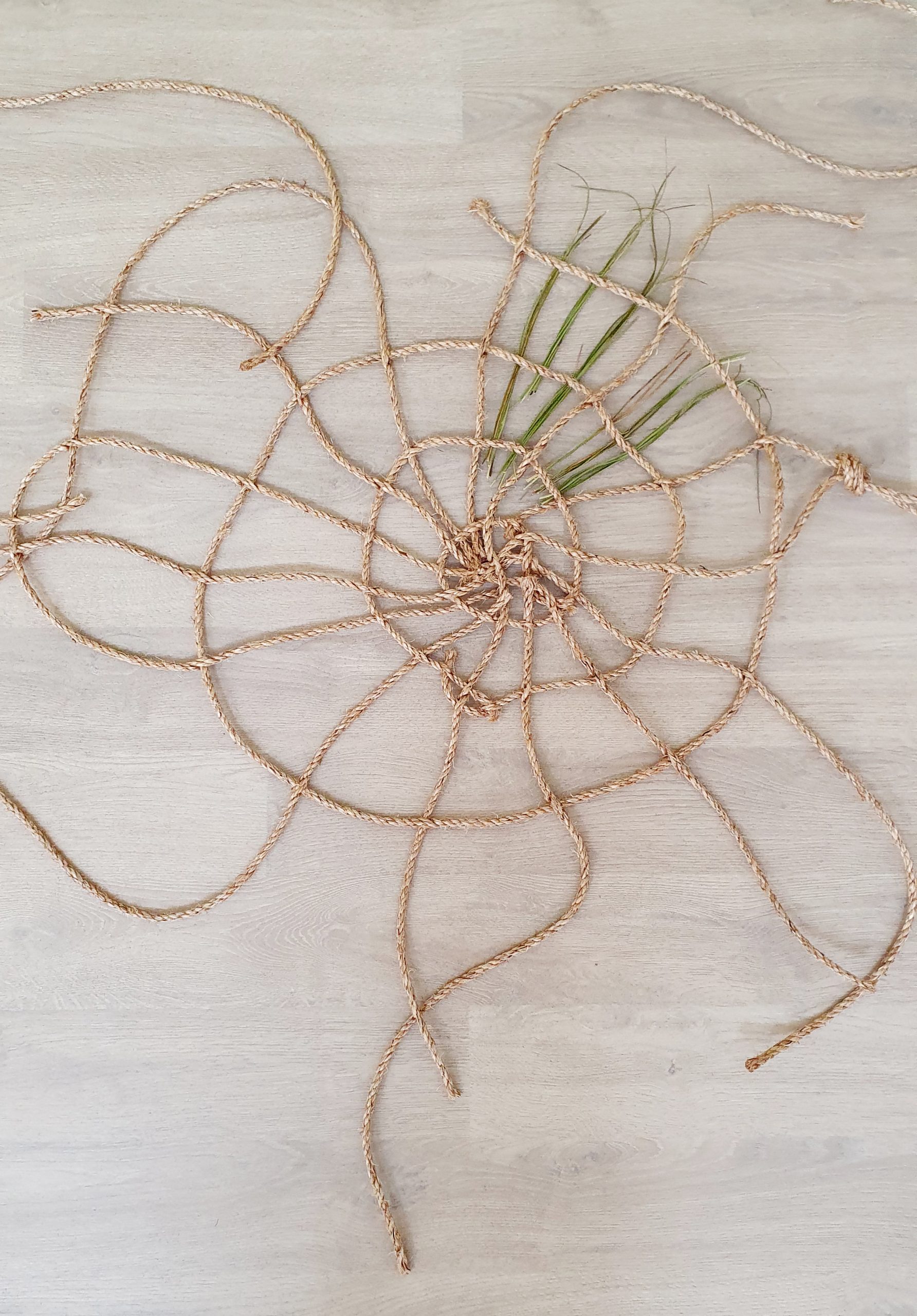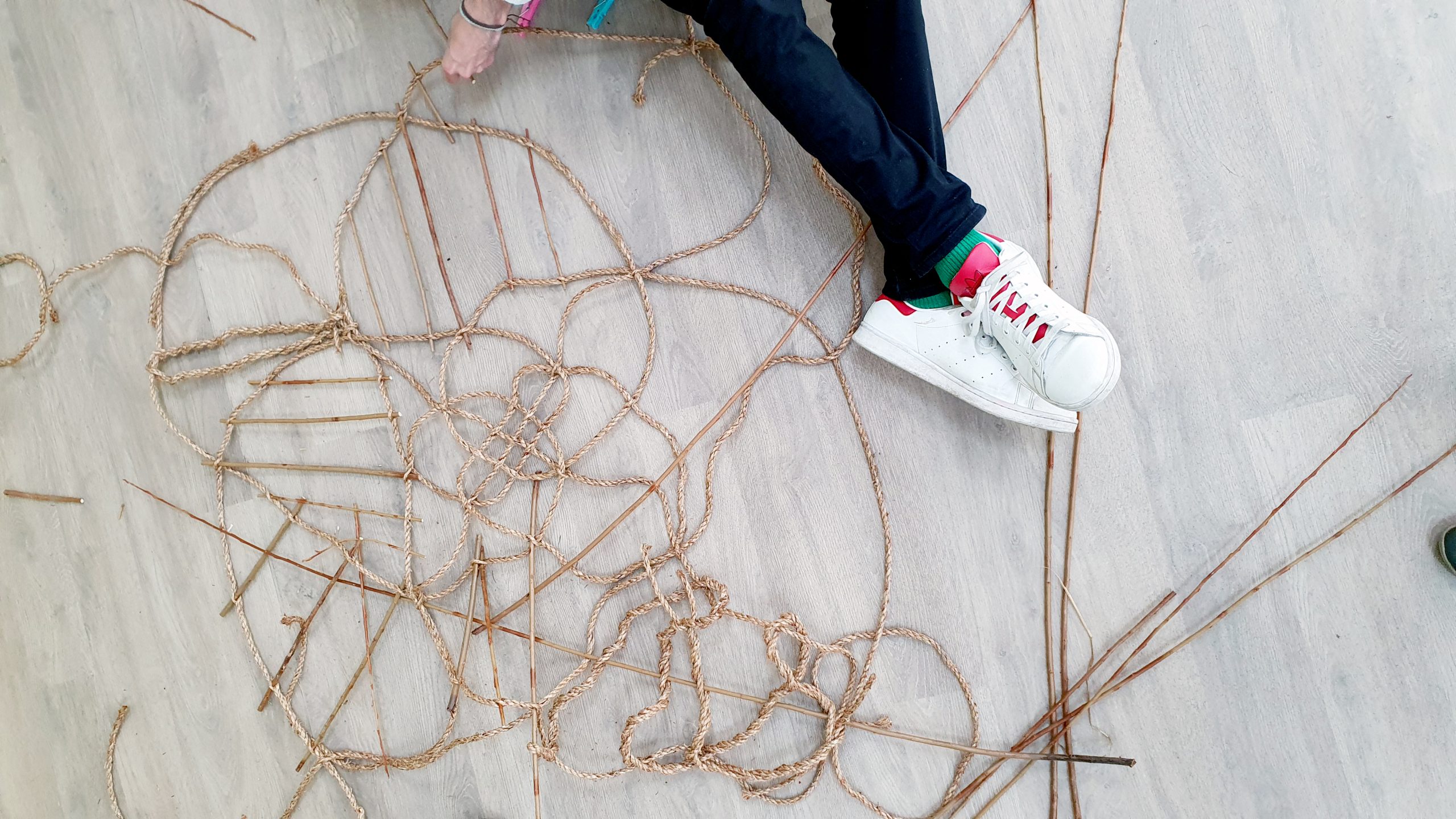In the spring of 2024 we started working with artists Caroline Dear and Martha Orbach to explore the use of weaving and making cordage with plant fibres in our interventions.
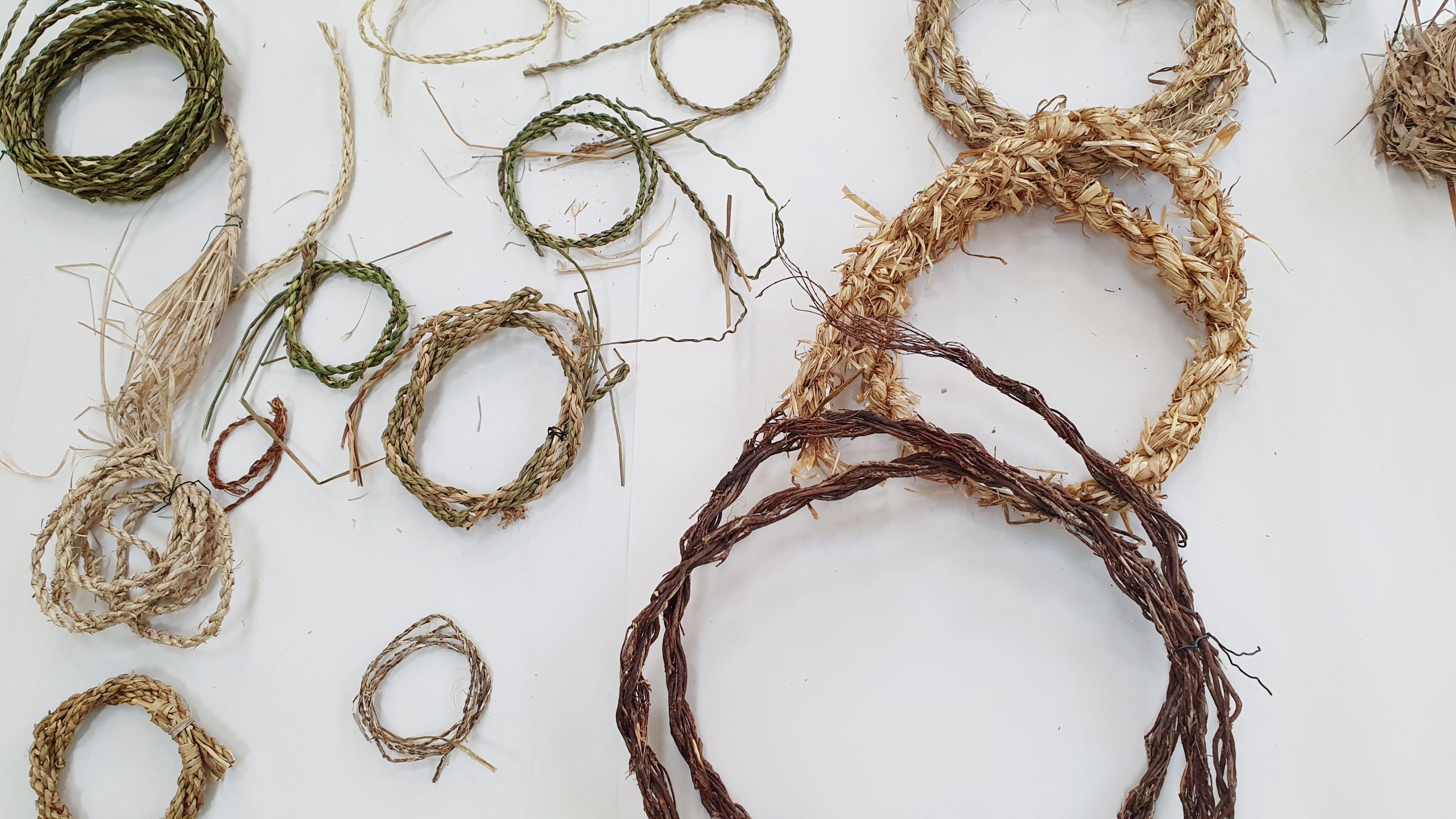
For thousands of years, natural fibres have been manipulated for making ropes, nets, and woven structures. Traditionally, this would have involved employing primarily fibres from plants that could be harvested locally. Different treatments and techniques would be applied to achieve a varying degrees of strenghts, softness, stiffness etc. – so that the characteristics of the resulting product would depend not only from the type of fibre used but also from the way in which this is processed.
When stripped of their bark, finely spun and tightly plied, for example, nettle fibres used to be turned into relatively fine and increadibly robust fishing nets.
Caroline and Martha researched local plants, including saltmarsh vegetation, and experimented with weaving and making cordage out of different fibres, speculating on how these might be used as matting to support sediment accretion. They used primarily nettle, spartina, sea rush, straw.
Between April and August 2024 a series of workshops were organised in partnership with Our Future Coast, in which participants made cordage and mats with different fibres.
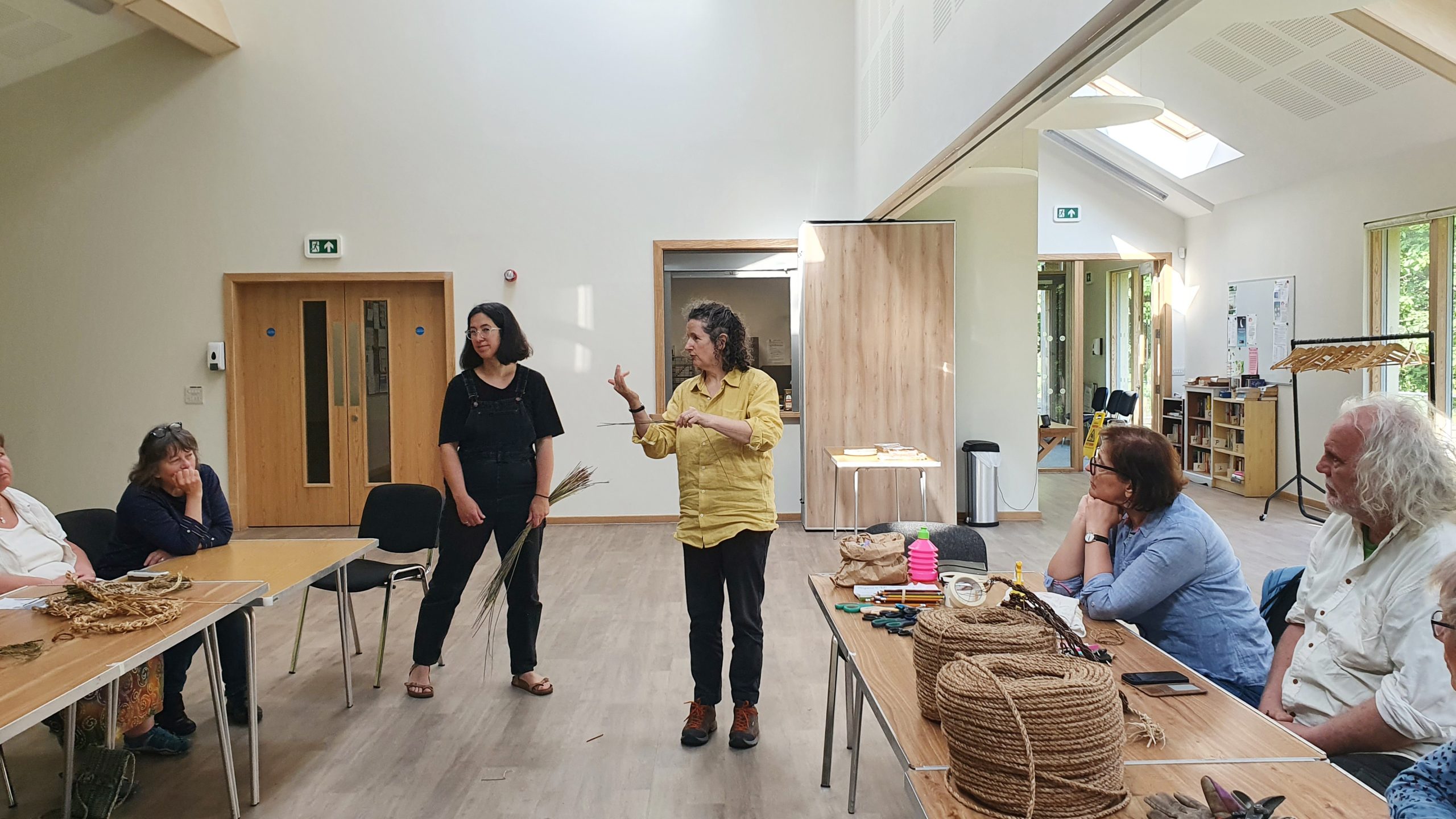
While none of the structures made with locally harvested fibres made it to the stage of testing (too few and too small to deploy), this collaboration led to some insights into ways of working with local vegetation, and we are now exploring further possibilities.
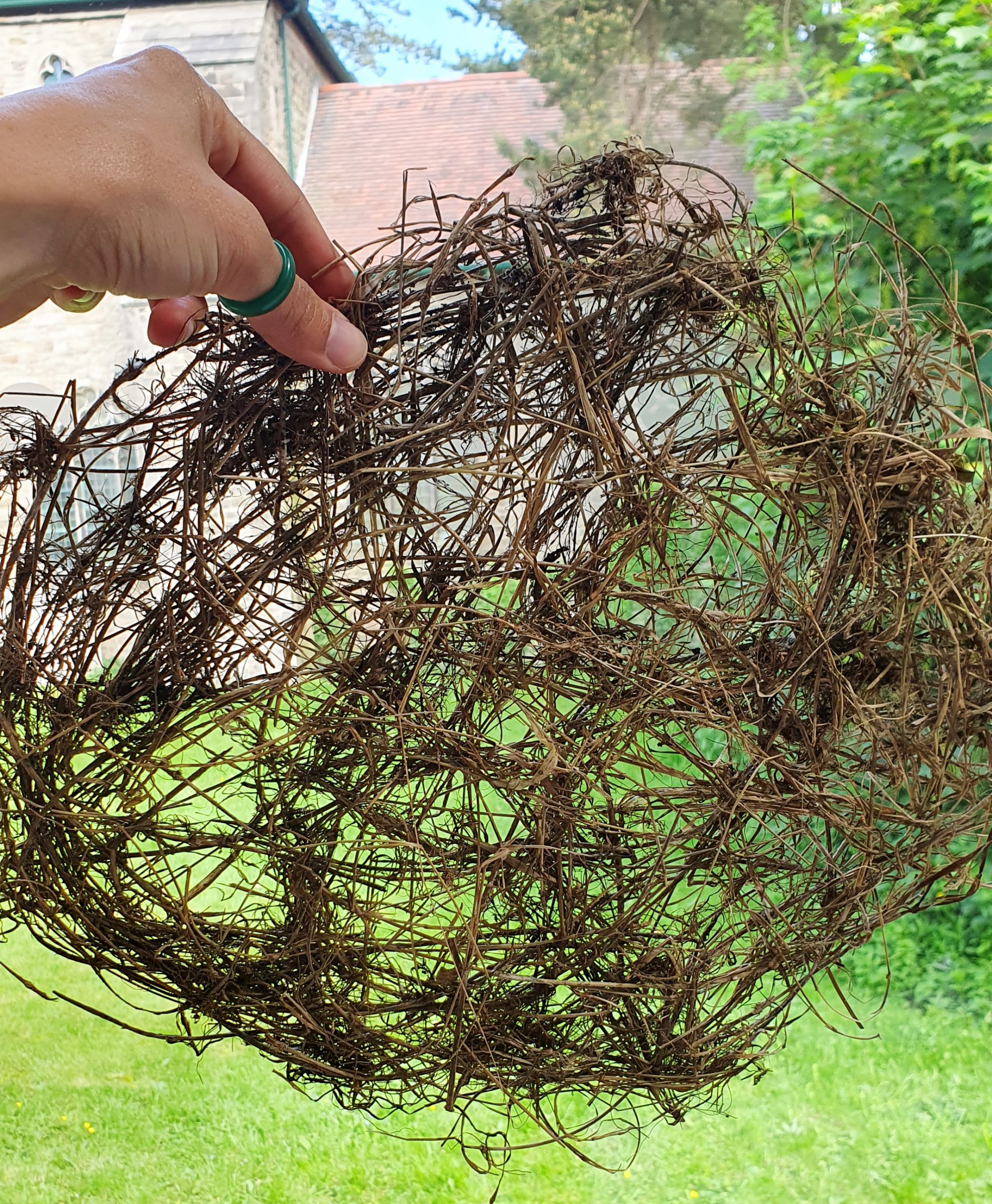
Woven structures made during the workshop with commercially available Manila rope have been anchored to the sea bed and are currently being monitored. Initial results seem to be promising as these structures have been quickly covered by sediment and, because of their flexibility, seem to be adapting to the movements of the tides without provoking significant scouring.
